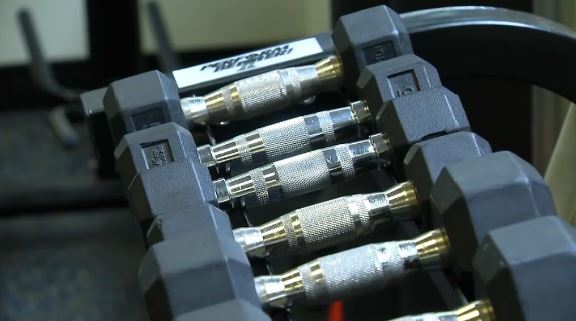Youth and adult sports are allowed now that Massachusetts has entered Phase 3, Step 1 of its reopening, under specific restrictions released by the state Monday.
Much of the guidance mirrors standard workplace safety protocols that have been adopted throughout the state as it has moved through stages of reopening amid the pandemic, including proper hygiene, physical distancing and facial coverings.
The president of Medford Youth Girls Softball is thrilled games can start up again, but she said they will look different.
"We have to extend our dugouts to allow the girls to social distance. And it might only be one spectator per player or two spectators per player to prevent crowding," Danielle DiRusso said.
State officials determined how sports and recreational activities will look based on a combination of the risk of spreading the coronavirus and the level of risk associated with the “Type of Play," which is categorized into four types of play. The sports are broken down into “Lower Risk,” “Moderate Risk,” and “Higher Risk.”
Sports and activities included in the "Lower Risk" category can participate in Level 1, 2, 3, 4 type of play. Sports and activities included in the "Moderate Risk" category can participate in Level 1, 2 and 3 type of play. Sports and activities included in the "Higher Risk" category can participate in Level 1 type of play.
David Geaslen of 3Step Sports was tapped to be on the state's advisory panel since he helps manage youth sporting events in 34 states. Geaslen said he was blindsided when the new guidelines came out and games for high-risk sports were left out.
"These kids got shut down. Millions of kids in Massachusetts can't play sports. And for how long? There's no guidance for that, either," he said.
Geaslen said many of the teams were already practicing, but the new rules only allow for no-contact practices. He expects many indoor facilities, such as hockey rinks, to go out of business.
"We went backwards and it makes no sense," he said.
He is hopeful things will change in the next step of Phase 3, but for now, he is trying to move games to neighboring states that do not have as many restrictions.
The guidelines, released by the Executive Office of Energy and Environmental Affairs on Monday, do not apply to fall K-12 and other school sports. Guidelines for school and other youth sports activities are currently being developed by the EEA and the Department of Elementary and Secondary Education as they develop plans for the fall semester.
"The guidance yesterday is for summer sports only," Lt. Gov. Karyn Polito said.
Type of Play
The following types of play function as levels from least to greatest risk for coronavirus transmission, as defined by the state.
- Level 1: Individual or group activities that involve no-contact workouts like aerobic conditioning, individual skill work and drills.
- Level 2: Competitive practices such as intramural games, contact drills and scrimmages.
- Level 3: Competitions including intramural games, meets, matches and races.
- Level 4: Outdoor tournaments and indoor and outdoor competitions.
Risk Level
Sports are broken down into “Lower Risk,” “Moderate Risk,” and “Higher Risk.”
- Lower Risk: Activities that can be done with social distancing or individually. Examples include batting cages, tennis, pickleball, swimming, catch, golf, biking, surfing, horseback riding, sailing, fishing, hunting, motor sports, gymnastics, yoga and no contact exercise classes.
- Moderate Risk Sports that involve occasional contact, but where protective equipment like masks can reduce the risk of spreading the virus. Examples include baseball, softball, crew/sailing (two to three people in a boat), track and field, cross country, running clubs, team swimming, volleyball, dance class, fencing, field hockey and no-contact lacrosse.
- Higher Risk Recreation activities that involve close contact and, therefore, have a high risk of transmission. Examples include football, wrestling, soccer, rugby, basketball, lacrosse, ice-hockey, competitive cheer, martial arts, crew/sailing (more than three people in a boat) and ultimate frisbee.
Get top local stories in Boston delivered to you every morning. Sign up for NBC Boston's News Headlines newsletter.
Competitions and Tournaments
In Phase III, Step 1, only "Lower Risk" sports are allowed to have outdoor tournaments, but competitions may be held indoors under specific guidelines.
For both indoor and outdoor competitions, no more than 25 players are allowed per team in any space. No more than 100 people are allowed at any one time for outdoor tournaments, including participants, players, coaches, volunteers and spectators alike.
All spectators are required to wear masks, but people are not allowed to go watch adult sports with players over the age of 18.
For people to watch outdoor youth sports, there must be enough space outside for everyone involved to stay at least six feet apart from one another, according to the state guidelines.
If an indoor facility has designated viewing areas with enough space for social distancing, then one spectator per player is permitted. The facility can't exceed more than 40% of the maximum occupancy, though.
Organizers and owners of facilities with multiple fields or courts are urged to schedule competitions and tournaments in a way that avoids too much overlap and to call it a tie if the game time expires. Common touch points and equipment must be disinfected.
Facility operators and businesses involved in amateur sports must follow the standard coronavirus safety measures including masks, six feet of physical distance, hand sanitizer or hand washing capabilities, encouraging everyone to stay home when sick, sanitizing common touch points, proper employee training and signage.
More on Phase 3 of Reopening Massachusetts
Most of Massachusetts has entered Phase 3, Step 1 of its reopening plan amid the novel coronavirus outbreak.



